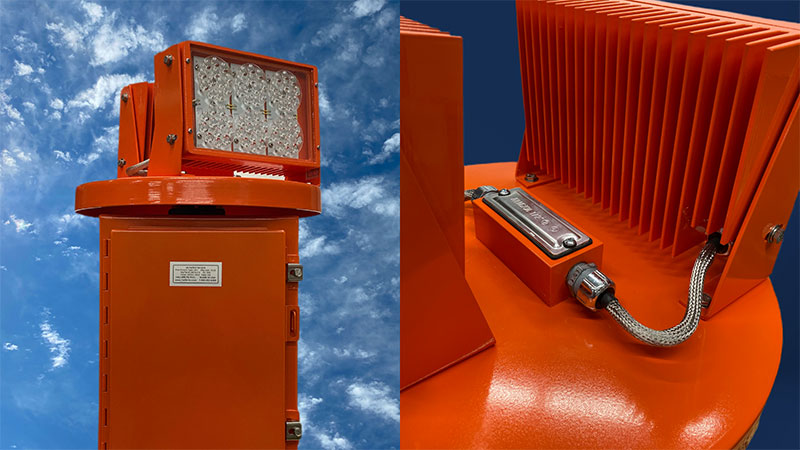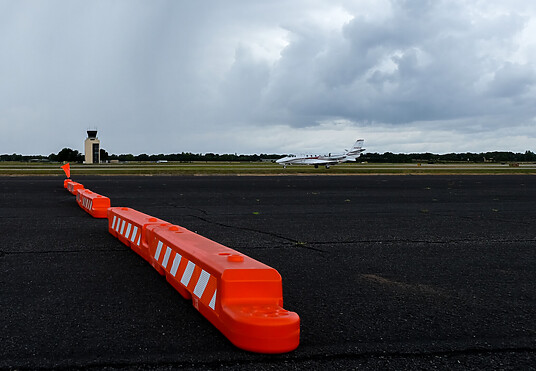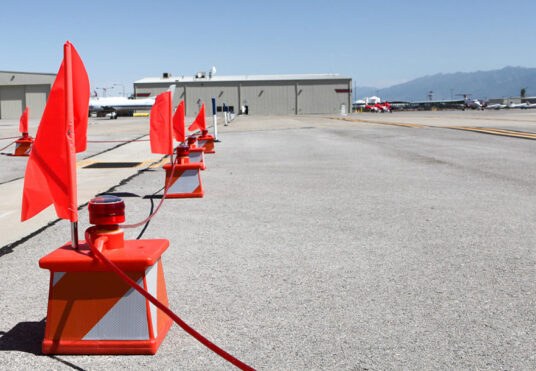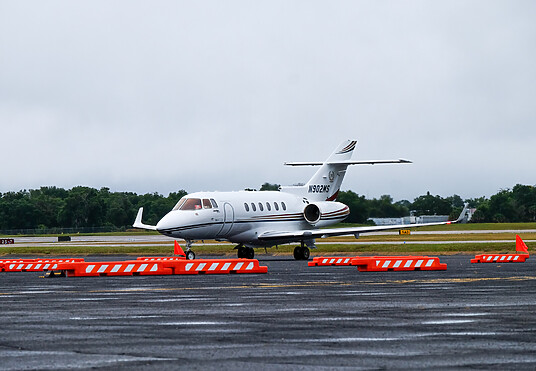Meet the LED Rotating Beacon Light

100 years after the dawn of the electric light beacon (better known as an airway beacon back then) in July 1923, OTW Safety is proud to announce the LED Rotating Beacon as part of our permanent lineup of airport products.
History of the beacon light
In the early days of flight, there was no way of safely flying an airplane at night, even for someone with excellent vision, because navigation aids had yet to be created. Pilots relied heavily on landmarks and road maps during the day, but it was an entirely different story when the sun went down.
While most refrained from flying at night due to the risks and hazards involved, the postal service was an entity that worked around the clock. This meant that there needed to be a safer way to transport airmail than flying blind and hoping for the best.
In 1919, U.S. Army Air Service Lieutenant Donald L. Bruner had the bright idea to light bonfires as an attempt to help with nighttime navigation. While primitive, this was a success for the 1921 nighttime flight of airmail pilot Jack Knight from Chicago, Illinois, to North Platte, Nebraska. With this success, the Army and the postal service began to work toward a more consistent (and less dangerous) type of beacon to light the way for nighttime pilots.
What came of that effort was a test run of a lighted airway between Dayton, Ohio, and Columbus, Ohio, and eventually, a transcontinental airway of white, rotating searchlights on towers spaced 15-25 miles apart. At the time, these beacons could be seen from 40 miles away in clear weather, an enormous improvement on previous conditions.
By the mid-1920s, guidelines directing the requirements for lighting at airfields, the proper size of landing fields for increased safety, and the addition of a small searchlight to every plane in the sky were put into play.
While the first transcontinental airway of beacons is no longer operational, the initial idea by Lt. Bruner lit a fire under the Postal Service and transformed lighted navigational aids into what we know them today. The “airway beacon” that was inspired by that first bonfire led the way and has transformed over the years into the now-used aerodrome beacon or, our newest product, the rotating airport beacon light.
What is an airport beacon light?
A rotating airport beacon light is exactly what it sounds like: a flashing, rotating, colored light or set of lights used at airports in order to guide pilots safely to the airport during dark or nighttime hours. These lights are installed on top of control towers or the highest building available, lighting up the sky for all pilots to see. They are a type of visual navigation aid that project information via light into the sky for pilots to see. Think of them as a lighthouse for the sky!
Per the FAA, the number of flashes output per minute by the light indicates to pilots what type of airport or heliport they are approaching: airports, landmarks, and points on federal airways are identified by 24-30 flashes per minute, while heliports receive 30-45 per minute. To further identify the specific type of airport, color codes are used. They are as follows:
- Lighted heliport: green, yellow, and white
- Hospital and emergency services heliport: white, green, and red
- Lighted land airport: green
- Military airport: white, white, and green
- Lighted water airport: white and yellow
- Lighted land airport: white and green
In addition to the number of flashes and the color codes, the FAA has strict guidelines informing how a beacon is cared for. The most notable specifications denoted by the FAA are:
- The tower and beacon must be painted with aviation gloss orange and white.
- The beacon should be inspected daily for functionality.
- The glass in the beacon must be inspected twice a month to ensure it is clear.
- The electrical components and connections must be inspected every year.
- The lamp should be replaced every 30,000 hours.
Following these guidelines ensures that the sky is the safest it can be!
What are beacon lights used for?
You’ll find a beacon light at every airport that has a lighted runway. They have a lifespan of 7-15 years, depending on the model, and, as noted, are most commonly used to indicate to pilots where the airport and airfield are and what type of airport they are approaching.
While generally used at night, beacon lights also are used during the day, especially in busy airspace. They’ll often be turned on when ground visibility is less than three miles or the ceiling is less than 1,000 feet. There are different types of rotating beacons for different situations, and OTW will carry a number of iterations, catering to the widest variety of airports possible!
What types of rotating beacon lights will OTW carry?
OTW is dedicated to safety and the safety of the sky is no exception. In order to best serve our customers, OTW will carry a variety of rotating beacon lights suited to the various needs of all types of airports.
The L801A(L) is our standard LED rotating beacon, primarily built for airports, with medium light intensity. The L802A(L) is the same make but with a high light intensity, perfect for foggy nights or airspace where brighter light is needed. This rotating beacon is AIP Buy American qualified. Its instanton LED lamps allow for a 65-75% power reduction over traditional metal halide lamps, depending on the model.
Non-LED models are also available for purchase.
The L801H(L) is our rotating beacon built specifically for heliports. As per FAA regulations, this model has the appropriate colored lights to indicate that the airway being approached is a heliport versus an airport. This FAA ETL-certified heliport beacon has one white LED lamp, one aviation green LED lamp, and one amber LED lamp. Its instant-on LED lamps allow for an 80% power reduction over traditional metal halide lamps.
The HBM 320 | L-802 M is the final model available and is suited for military installations in particular. This FAA-certified rotating beacon is a pulse-start lamp that is fully bright in 3-5 minutes. It has one white dual-beam lens and one aviation green lens.
All models have optional accessories that can be added to your quote, such as a tell-tale relay, heater, wind sock, and more.
Make the bright choice: choose OTW for your rotating beacon light needs.
Our team is ready to light up your airways with the Rotating Beacon Light; give us a call with any questions or submit a quote request today!


